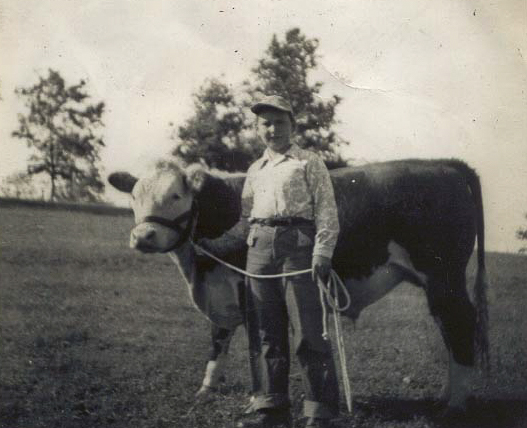When Gene Gabbard first heard the Mercer story, he was inspired. Since then, the telecommunications pioneer has stayed connected to Mercer as one of its most dedicated supporters. He’s now serving his fourth term as a Mercer trustee and is a life member of the President’s Club.
Through an introduction by the late Bobby Pope, who was athletic director at the time, Gabbard met former University President Dr. Kirby Godsey in the 1980s and toured the Macon campus.
“I was just stricken. I said, ‘This is one of the greatest university leaders that I’ve ever met, and this school is doing everything right,’” said Gabbard, a resident of Cary, North Carolina, for nearly 30 years.
He was impressed by the University’s overall atmosphere and progress and Dr. Godsey’s big plans for the future.
“It was a particular connection with Kirby Godsey and Mercer and Macon that formed a lasting bond (for Gabbard),” said Doc Schneider, a longtime Mercer trustee. “I think that’s a tribute to Godsey, the University, and (President William) Underwood’s vision of continuing to build where Godsey left off. I think that’s what has kept Gene Gabbard connected to the University. He sees Mercer as an ever-growing enterprise.
“Unlike a lot of trustees who have some skin in the Mercer game, who have gone to one Mercer school or another, (Gabbard) was someone who did not at all. He went to the University of Kentucky and Penn, had a world-scoping adventure of life, and yet here he was sitting as a trustee at a Mercer dinner, singing the praises of the University.”
Gabbard was invited to join the Mercer’s Board of Trustees, beginning his first term in 1990, and then the National Engineering Advisory Board (NEAB), where he could support future engineers who would one day change the industry, as he had through his career.

A growing interest
Gabbard’s interest in electronics came early. Growing up in Jackson County, Kentucky, he was building small motors and repairing clocks for people when he was only 9 or 10 years old.
Inspired by the success of his older brother, who was pursuing a Ph.D. degree in nuclear physics, and his father, who taught him business principles on the family farm, Gabbard decided by junior high that his career would be in electrical engineering. He chose specific courses in high school to prepare him for that path and went on to study at the University of Kentucky.
Gabbard got his first taste of telecommunications work during a summer job with AT&T, where he enjoyed being involved in a project to measure the resistivity of the Earth for a defense cable from New York to California.
After graduating with his bachelor’s degree in electrical engineering, he was accepted to the RCA (Radio Corporation of America) graduate study program in electrical engineering at the University of Pennsylvania and worked on one of the early satellites with the Space Electric Rocket Test program.
Upon completing his master’s degree in 1963, he served as a first lieutenant in the U.S. Army Signal Corps for two years at the Highlands Air Force Base in New Jersey, which was responsible for all military telecommunications in the New York to Philadelphia corridor.
In 1965, Gabbard took a job in Washington, D.C., with Communication Satellite Corporation (COMSAT), which had been formed as a result of the Communications Satellite Act of 1962 with the purpose of creating a global commercial communications satellite system. All satellite communications had been analog up to that point, and he was part of a new team that was charged with developing innovative digital techniques.
“We built and tested the first of what’s called the Time Division Multiple Access (TDMA) system,” Gabbard said. “That technology is used today throughout the world in satellite communications. I developed the synchronization system for that and hold that patent and 15 more patents related to that and digital television, most of that work at COMSAT.
“The world went digital, and being in the right place at the right time and having outstanding leadership is so incredibly important.”
A series of firsts

After seven years at COMSAT Laboratories, Gabbard co-founded telecommunications equipment manufacturing company Digital Communications Corporation. DCC, which became M/A-Com and then Hughes Network Systems, had a lot of firsts in the telecom industry, he said.
The company installed the first commercial high-speed TDMA system; developed digital satellite equipment that could be used on boats and ships; and built part of the new satellite hotline from Russia to the United States. DCC also built the first microprocessor packet switches in the world and later made a version for the U.S. government for worldwide internet networking.
After leaving M/A-Com, Gabbard bought a small telecommunications company that through mergers became SouthernNet and then Telecom*USA, which connected the first nationwide fiber optics network and became the fourth-largest U.S.-based long distance company service provider before it was bought by MCI. Gabbard served in various leadership positions with these companies and was MCI’s executive vice president and chief financial officer when he retired in 1993.
“The ‘fiber to the home’ movement, getting entire rural America wired, is a top interest for me,” Gabbard said. “Right now, I think fiber optics is changing the world more than probably any other technology around, and I’ve been deeply involved in it for 40 years. Really, I just love it.”
The venture capital business
For Gabbard, retirement hasn’t meant slowing down at all. He has been in the venture capital business since then and involved in numerous companies, including as a past adviser for the Walt Disney Co., Telecom Italia and Nippon Electric Co. He is a venture partner in Ballast Point Ventures, and he was previously a director of COLT Telecom and a chairman of ClearSource and Wireless One of North Carolina.
He’s worked on 25-plus startups with Telecom*USA co-founder Cam Lanier, invested in more than 40 start-up companies on a personal basis and served on 20-30 boards. Companies he is on the board for now include Point Broadband, Talon Aerolytics and LumenServe, and he was previously involved in Knology, Powertel, PowerCloud and IDology.

In addition, Gabbard owns 360 acres of farm land and 500 head of cattle and leases another 400 acres of land for hay.
“I stay busy. I’m not going to quit until I fall over. That’s what keeps me alive. If you want to be healthy and happy, you’ve got to work with your brain and your body,” he said.
Gabbard finds supporting young entrepreneurs in their innovative business ventures and working with startup companies to be fulfilling and exciting.
“If you look at the U.S. economy, by and large, the economy is driven by small businesses and startups. I get excited when I see a new opportunity. I love technology. I continue to follow it and read about it,” he said.
He also enjoys contributing to the education of future innovators, including by supporting higher education institutions like University of Kentucky and Mercer. His philanthropy has sent more than 40 students to college, and one-quarter of the charitable remainder trust he created has been designated to Mercer and is now worth $1 million.
“It’s amazing the impact Mercer is having,” Gabbard said. “I think Mercer is one of the best universities in the United States. I am so proud to be associated with it. It’s such an honor.”
About the Mercer Board of Trustees
The Mercer Board of Trustees is the governing body for the University. It sets institutional policies, stewards Mercer’s mission and ensures that adequate resources are available to carry out its educational programs.









